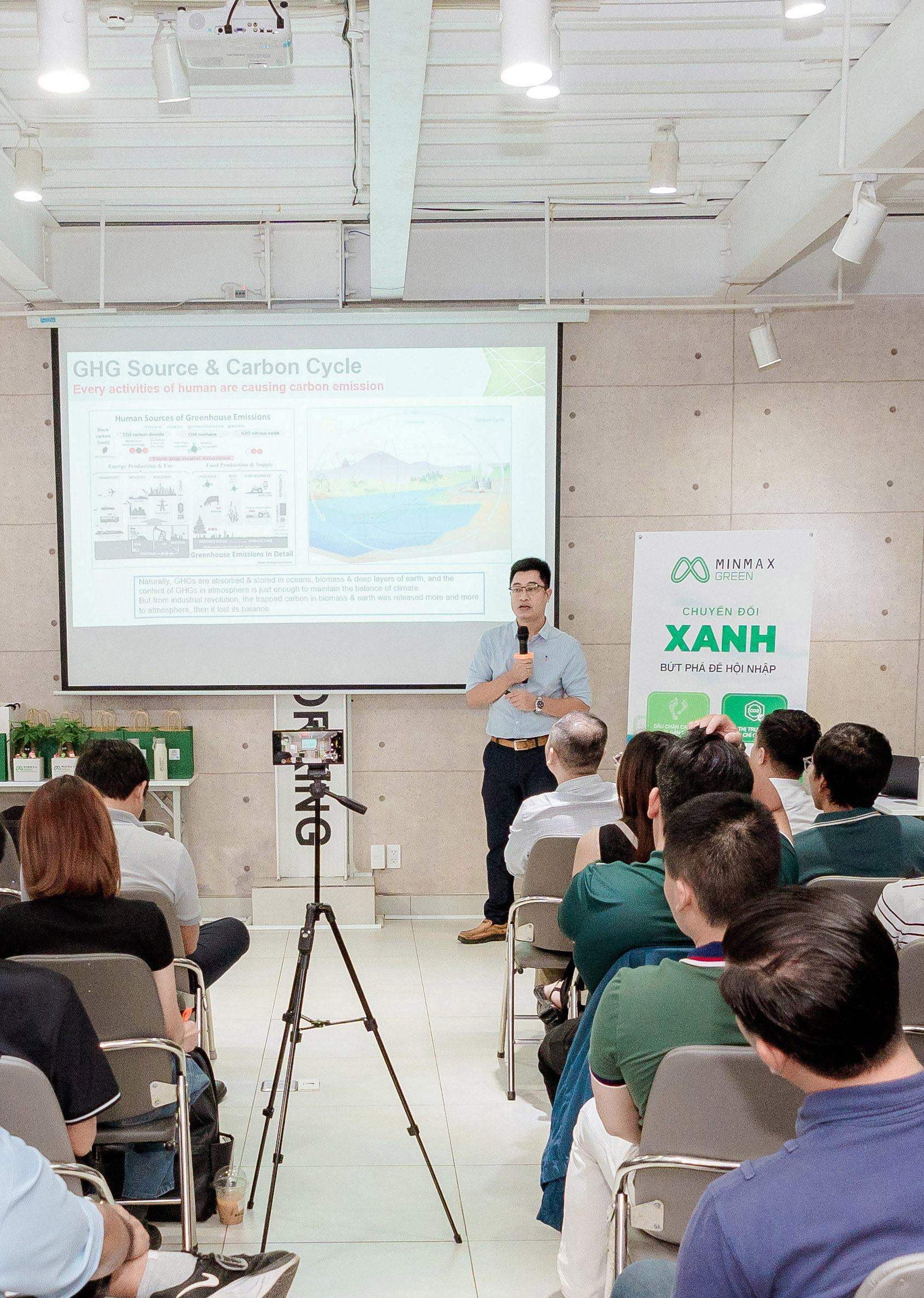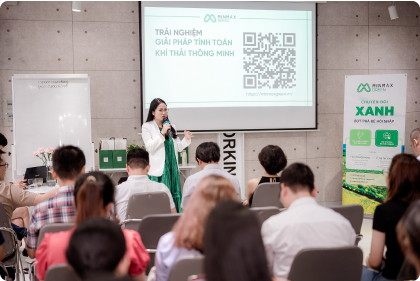QUANTIFYING PRODUCT CARBON FOOTPRINT (PCF) ACCORDING TO ISO 14067:2018 Increase product value - Affirm green position
Vietnamese businesses find a place in the green economy
If Vietnamese enterprises want to maintain their supply chains, they need to quickly build the capacity to assess and publish PCF according to international standards (ISO 14067). This is also a strategic step to help enterprises proactively meet new export standards, minimize trade risks and expand opportunities to penetrate global markets.
What is carbon footprint? Why businesses need to measure and reduce it now?
A carbon footprint is the total greenhouse gas (GHG) emissions - expressed as CO₂ equivalent - generated over the entire life cycle of a product: from raw material extraction, manufacturing, distribution, use to post-use disposal. 🔎 Standardized by ISO 14067, determining a carbon footprint is a fundamental step for businesses to:
- Optimize production costs, by identifying and eliminating wasteful activities.
- Enhance competitive advantage when participating in the global supply chain.
- Meet mandatory reporting requirements of markets such as the EU through the CBAM mechanism (officially applied from 01/01/2026).
Calculating Product Carbon Footprint – The First Step to Joining the Global Supply Chain
As carbon emission transparency becomes a mandatory standard in international supply chains,
the calculation and disclosure of Product-level Carbon Footprint (PCF) is the key for businesses to affirm their environmental compliance capacity,
increase access to export markets, as well as consumers.
From manufacturing industries such as textiles, wood products,
food, electronics... to multinational corporations,
PCF has become one of the criteria for evaluating supplier selection
and is also the foundation for building a practical and feasible emission reduction strategy.
PCF COURSE - REDUCING CARBON FOOTPRINT, EXPANDING EXPORT MARKETS
is a program organized by Minmax Green - A pioneer in the field of product carbon footprint consulting,
product life cycle assessment (LCA), and building greenhouse gas emission reduction strategies according to international standards (ISO 14067).
The course provides a comprehensive solution to help businesses understand,
calculate and make transparent the amount of greenhouse gas emissions throughout the product life cycle.
PCF COURSE accompanies businesses
and technical groups in mastering the PCF assessment method according to ISO 14067, building data,
making standard reports and proposing solutions to reduce emissions, enhance product value and international competitive advantages.
COURSE CONTENT

Overview of the Carbon Footprint mechanism
Goals, requirements, roadmap,...

Latest summary
Regarding regulations on declaration, reporting of emissions according to standards, purchasing PCF certificates,...

Approach - Analysis - Processing
Specific situations.

Intensive training
How to calculate carbon costs, data transparency process, opportunities for improvement, enhancing competitiveness,...
TARGET PARTICIPANTS

Manufacturing and exporting enterprises need to meet environmental requirements from partners and supply chains.

Consultants and professionals who want to improve their PCF reporting skills. Individuals with a career in the Carbon, ESG, Net Zero fields.

Environmental, ESG professionals implementing or learning about ISO 14067.
5 Reasons to Join Minmax Green's Carbon Footprint Course

What will students receive after the course?
- Minmax Green Carbon Footprint Course Completion Certificate.
- Fully equipped with the skills to calculate carbon emissions for products and services, and the ability to identify critical emission points throughout the entire value chain.
- Students are equipped with knowledge to work effectively with international partners, meeting the requirements of transparency of emission information in commercial transactions.
- Master the foundation of Carbon Footprint - from concept, role to application in business sustainable development strategy.
- Understand the principles and methods of greenhouse gas calculation: from identifying emission sources, collecting and processing data according to international standards.
- Guidance on developing effective emission reduction solutions, optimizing operating processes, saving costs and increasing competitiveness.
- In particular, students are directly consulted by a team of experts from MinMax Green, accompanying businesses to solve practical problems in reducing carbon emissions.

Mr. Thuy Nguyen Hung
Lecturer
- Graduated from Ho Chi Minh City University of Technology
- Has more than 14 years of experience in the construction field
- Participate in training, workshops, and seminars related to construction, greenhouse gases, and carbon credits.
- LEAD GHG Verifier and Validator
- Head of Technical Consulting Department, Siam City Cement Vietnam (Insee Viet Nam)
- LEED Green Building Consultant (LEED Green Associate)
“Investment” for
“green future” of the business
In parallel with the goal of committing to net emissions of “0” by 2050, Vietnam is also considered an attractive destination for international green capital with a legal environment being perfected, Production facilities and businesses are also making serious efforts to implement the State's regulations on greenhouse gases, Applying an effective circular business model,...
Proactively building a knowledge base and proactively improving skills on Greenhouse Gas Inventory is a great advantage for businesses. and is a long-term investment for the sustainable development of the business in the future integration cycle.


